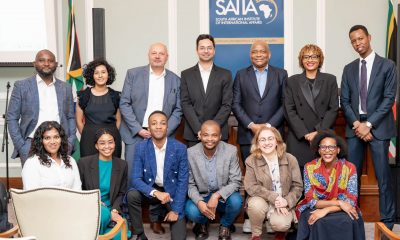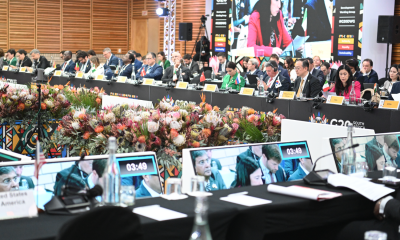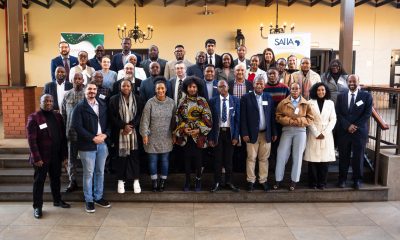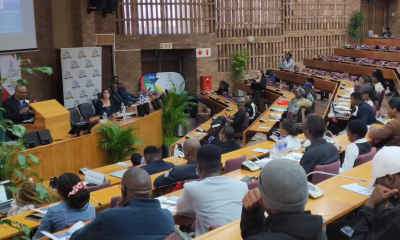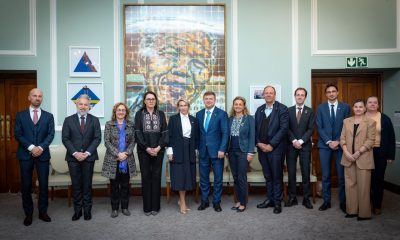This Summit was unique for the fact that it was the first time the Summit was hosted in Africa; the Summit further marked the first full hosting cycle by all the BRICS countries, marked the consolidation and institutionalisation of the BRICS group; and was the first time that the Summit was dedicated to a continent (Africa), rather than solely to BRICS issues. For South Africa, it was also an opportunity for the country to prove its worth and value in the group, and it chose to do this through the ‘Africa’ ticket, bearing in mind that the campaign for membership was premised on the ‘South Africa as a gateway to Africa’ ticket. It is evident that the BRICS 2013 Summit was very much centered on South Africa and Africa.
An update is now available for the highly popular online resource ‘BRICS and the World Order: Beginners Guide.’
Theme for the Durban Summit
South Africa chose the theme of ‘BRICS and Africa: Partnership for Development, Integration and Industrialisation’ for the 2013 Summit. This theme spoke to the country’s foreign policy narrative which prioritises Africa as well as the closer trade and investment linkages between the BRICS countries and the African continent, especially as far as China, India, Brazil and South Africa are concerned. The theme was not without controversy however. On the South African side, it came with the burden of championing the African agenda (which came with assumptions of ‘representing’ Africa) without a specific mandate to do so, even if the theme spoke to specific priority issues as identified by continental bodies. This pointed to a gaping hole in terms of South Africa’s failure to consult and engage with individual African countries, given that it sought to champion an ambitious agenda placing Africa at the centre of the Summit discussions.
In addition, commentators from within the ranks of the BRICS countries were sceptical of this approach, arguing that South Africa was invited to join the BRICS as an individual country and not as a continental representative. Moreover, it was argued that the BRICS’ own internal agenda is big and ambitious enough without South Africa pushing Africa as an additional agenda item. Other questions revolved around whether the BRICS group was mature and consolidated enough to start tackling such issues as a group, having consistently failed to find coherence on international issues, with one or two exceptions. Most importantly, there was the question of whether South Africa will always be able to rationalise its core strategic interests with those of Africa in such forums where it is the only African member, although Brazil admittedly faces the same geographical dilemma.
On the other hand, the chosen theme has to be viewed within the context of South Africa’s history with the continent, particularly from the days of the Thabo Mbeki administration. President Mbeki was a supporter of the ‘Africa first’ approach to South Africa’s foreign policy and was very active in implementing an Africanist agenda. During his tenure in office, South Africa was instrumental in the establishment of such institutions as the New Economic Partnership for Africa’s Development (NEPAD), the African Peer Review Mechanism, the African Renaissance Fund and the African Union. This legacy has been carried on by the South African government under President Jacob Zuma.
The theme was not without its merits however. It picked up on many issues that Africa has grappled with in its relations with both traditional and emerging powers, including the BRICS countries. This issue has been further magnified with the emergence of a BRICS presence on the African continent. BRICS countries are increasingly active in resource rich countries in Africa, with steadily rising trade and also investment in infrastructure development in these countries. The nature of the engagement between African countries and the BRICS countries has caused much angst and apprehension among some commentators. One consistent theme to this discourse has been the question whether this engagement is beneficial for the African countries concerned as well as the seeming failure by African countries to (a) define their strategy when it comes to emerging economies and (b) ensure a regional approach to engagement with emerging economies – the BRICS in particular.
SA’s approach to the Summit presents an opportunity for a regional approach, potentially ensuring that non-resource rich countries are included in the BRICS’ economic engagement on the continent. SA has already shown leadership in leveraging the renewed interest in Africa by the BRICS through such initiatives as the Comprehensive Strategic Partnership Agreement it signed with China in 2010. Nevertheless, this links back to issues of South Africa’s perception of its role as a regional leader, complete in its own view with an obligation to articulate the African agenda and champion African interests in global forums.
This of course raises questions of mandate and legitimacy from other African countries. This means that SA’s leveraging on behalf of Africa requires a buy-in from the rest of the continent. SA did demonstrate some progress in this regard by inviting continental institutions, regional economic blocs and some African heads of state to the first “BRICS Leaders-Africa Dialogue Forum Retreat” on the afternoon of 27 March 2013 under the theme “Unlocking Africa’s potential: BRICS and Africa co-operation on Infrastructure”. This was commendable but would perhaps have earned more plaudits if the engagement, particularly between South Africa and these institutions and heads of state, had taken place prior to the Summit. Engaging with the African leaders after the Summit created the impression that having held their Summit, whose theme placed Africa at the core of the discussions, the BRICS were then presenting their decisions to Africa as a fait accompli. Nonetheless, it is hoped that this engagement marks the beginning of continuous engagement with African leaders, in view of the strong and ever-growing economic ties between BRICS and Africa.
South Africa’s role in the BRICS and in Africa
South Africa has anchored its BRICS membership on three pillars: national interest; regional integration; and infrastructure development. It is the regional integration and infrastructure development pillars that hold the most promise for Africa. These pillars are linked to the first by the realisation that South Africa’s economic growth is tied to the continent’s fortunes. Africa, and particularly the SADC region, is a key market for South Africa, particularly for its manufactured goods and services companies. Such an approach signifies confidence in the future of the BRICS group and emphasises its significance for Africa. The inclusion of regional integration and infrastructure is coherent with South Africa’s position regionally – that practical integration which actually delivers growth is an essential foundation for African economic development. Of course, at a bilateral level, each BRICS member has strong ties with Africa (Russia to a much lesser extent but the country is in the process of re-engaging Africa) and particularly with resource-rich countries.
Critics and other commentators have questioned the real value of South Africa’s membership of the BRICS grouping, besides the international prestige and elevated voice in international affairs it could deliver. Among the BRICS, South Africa is ranked third as Africa’s largest trading partner, on the heels of China and India, but has stronger links with Africa than any other BRICS country.1 Two issues arise from this: Is South Africa’s trade ranking in Africa affected negatively or positively by its BRICS membership; and what does South Africa’s ranking in relation to the other BRICS countries mean for South Africa’s commercial interactions on the rest of the continent?
The first point of departure is that before South Africa can leverage any trade or investment linkages with the BRICS on behalf of Africa, it has to demonstrate an ability to leverage such linkages for itself. South Africa has to show results before it can extend its ambitions to Africa.
South Africa’s approach to the BRICS is currently weak in that it fails to combine the country’s foreign policy tools with commercial diplomacy. This is closely linked to the failure by South African policymakers to actively engage the business sector and, at a broader level, is symptomatic of the inadequate coordination that exists between government and other relevant domestic stakeholders on many other issues. There is need for the SA government to consult with its populace to secure public support for the BRICS project. SA faces many pressing domestic problems and given this the public needs to understand why Africa is being placed at the primacy of the upcoming BRICS Summit. There also seems to be an expectation on the part of South Africa that other BRICS members will prioritise South Africa and the rest of Africa’s interests. South Africa needs to be proactive in its engagement with the BRICS countries and move away from rhetoric to engagement and action. There is a BRICS strategy that was adopted by Parliament but has been classified as a state secret and is therefore not accessible to the general public. The merits of such action are arguable, particularly as it excludes what should be a key component of South Africa’s foreign policy when it comes to the BRICS – the business sector. If SA has any ambitions to leverage growth for itself from the BRICS membership the private sector must be a close strategic partner or this ambition will simply not succeed. It is hoped, therefore, that this strategy speaks to a foreign commercial policy that can be utilised to the benefit of the business sector and thereby the development of the country. Democratic SA’s role in Africa is recent, and is sometimes characterised as that of a middle-power. This role is often contested by other anchor states, including an economically resurgent Nigeria, a regionally assertive Kenya, a democratising Egypt and finally, a more stable, economically rising Ethiopia. These other regional anchor states define the limits of SA’s influence in Africa and the selection process of the Chair for the African Union Commission in 2012 manifested the underlying tensions between SA and its neighbours, especially Nigeria.2 SA’s failure to be decisive and assertive in the UN deliberations over Resolution 1973 authorising a no-fly zone over Libya also created doubts over its ability to lead the continent. Nevertheless, the current BRICS Summit presents an opportunity for SA to redeem itself and show true leadership. Inherent in the above approach to Africa and BRICS, however, is the danger of SA getting lost in its own Africa rhetoric. There seems to be both a conceptual gap and a failure to contextualise SA’s economic and political engagement in Africa in an analysis and definition of African interests. The two are not necessarily common. SA’s national interests in BRICS need to be properly defined first and then balanced against the interests of Africa and only then can a proper strategy of engagement be framed.
SA should place primacy on its domestic interests and that also means protecting its comparative advantage in Africa. The BRICs are in Africa primarily to serve their economic interests and SA should do the same, although in SA’s case the national growth and African growth are interlinked. This means reconciling state and business interests and pursuing a more coherent strategy in SA’s economic diplomacy. SA’s ‘gateway to Africa’ claim should be actualised and business’s perspective is that efforts should be made to reduce the cost of doing business, reducing trade barriers, improving infrastructure and dealing with strong labour unions, rising wages, low levels of technical and management skills, declining state efficiency coupled with greater government intervention in the economy, the lack of policy transparency and a rise in political populism’.3 SA should assume leadership before placing that responsibility on the BRICs, in pursuit of development, integration and industrialisation on the continent. This can be achieved by utilising the tools of the Development Bank of Southern Africa as well as the Industrial Development Co-operation as principal agencies of SA’s economic diplomacy in Africa. These two institutions can finance cross-border infrastructure in support of the Tripartite Free Trade Area as well as open up opportunities for South African companies.4 Such an approach should also focus on Africa’s fastest growing economies, including the other regional anchors such as Kenya, Nigeria, Ethiopia and Egypt. Such approach would give SA more authority to place African issues on the BRICS agenda.
BRICS’ Engagement with Africa
BRICS countries are important for Africa as they among countries commonly referred to as ‘emerging powers’. These countries’ involvement in Africa has become a source of curiosity and at the same time contention, particularly as they have sought to define their own interaction with Africa, distinct from that of developed countries. Alden describes ‘emerging powers’ as:
“… a new group of states which has through a combination of economic prowess, diplomatic acumen and military might managed to move away from developing country status to challenge the dominance of traditional mainly Western powers.”
Increased large-scale production of manufactures in China, India and Brazil (CIB) in particular has led to an increased demand for natural resources and commodities in these countries.5 The African continent therefore serves as both a source of resources and a potential market for manufactured products, in addition to being an investment destination for surplus capital generated by these emerging economies. Trade is at the core of the engagement between China, India and Brazil (CIB) and Africa and it is growing at a fast pace,6 with a current estimation being that this trade will be valued at over $1 trillion by 2015.7 BRICS-Africa trade continues to grow at a robust pace and was estimated to have reached USD340bn in 2012, a tenfold increase from figures in 2008.8 Nevertheless, this trade consists mainly of Africa exporting primary products to the BRICS and the BRICS exporting manufactures to Africa. This reinforces Africa’s traditional role as a commodities exporter and impedes Africa’s efforts in diversifying its export basket, and growing a skilled workforce. The fear is that this basically continues and entrenches Africa’s marginalisation in the world economy.9 However, this detail has to be viewed in context, especially considering that CIB’s trade and investment relations with Africa have largely been concentrated on resource rich countries that can provide oil, gas as well as primary commodities.10 Additional context to be considered is that this economic engagement denotes a geographic shift of African trade relations from East to West, driven by new patterns of demand (although it must still be noted that the European Union as a region remains Africa’s largest trading partner); the diversifying of Africa’s trade partners; increased market access for Africa’s exports; and sustained African economic growth through the trade and investment linkages with CIB.11 Still, the export of manufactures by Africa is shrinking relative to the export of commodities.12
There are other drivers of this economic engagement. Diplomatic ties are used significantly by the BRIC countries in their economic foray into Africa.13 To this end, China employs a Forum for China-Africa Co-operation (FOCAC), Brazil instituted an Africa- South America Summit (ASA), while India runs an India – Africa Summit. State visits are very popular as they often result in bilateral trade and economic agreements as well as business deals for the business delegations that often accompany the heads of states.14
Russia is seen as in a different context from the other BRIC countries in that while domestic economic growth in CIB is closely linked to Africa and its natural resources, Russia’s economic growth can occur without dependence on Africa’s raw material because Russia itself is well endowed with natural resources.15 This also means that Russian trade with Africa is limited, mostly dominated by North Africa, and, in sub-Saharan Africa, focused on only three countries: Guinea exports aluminium; the Ivory Coast exports cocoa; and South Africa exports ores, iron and citrus fruits.16
Investment is also increasing in relevance with the BRICs being the fourth largest FDI investor in Africa between 2003 and 2009 (SA was not yet a member).17 The bulk of these investments were concentrated in resource rich countries and concomitantly, there have been concerns over the fact that most of the investment is driven by the desire for natural resources and located in sectors useful for the ‘extraction, commercialisation and acquisition of raw materials’.18 Where relevant this is linked to investment in search of markets which is driven by historical, cultural and linguistic ties e.g. Brazilian investments in Lusophone countries.19 Schoeman alludes to three important aspects of BRIC-Africa FDI: investment in infrastructure development; investment in the agricultural sector; and with specific allusion to China, investment in industrial development zones so as to integrate Africa in global production chains.20 The above is also an indication of FDI from BRIC countries becoming slightly diversified. One important caveat to the investment story is that the data available is unreliable as there is no consistent reporting on FDI flows.21 This last fact of course brings in another dimension of BRIC-Africa engagement, that of development aid and assistance. It is near impossible to track these financial flows mostly because the CIB countries are not part of the OECD Development Assistance Committee (DAC) and therefore do not have a standard reporting mechanism in place for their aid initiatives. An overall assessment is that, mimicking the trade and investment trends, development aid and assistance from CIB has also been concentrated in resource rich countries although there is evidence of development assistance flows to non-resource rich countries, though usually aimed at smaller projects.22
Outcomes of the BRICS Summit
The anticipated outcomes of the BRICS Summit were all achieved to a certain extent. The South African government had set out to achieve the following: the launch of the BRICS Development Bank; the BRICS Leaders-Africa Dialogue Forum; the launch of the BRICS Business Council; and the launch of the BRICS Think Tanks Council.
The BRICS Development Bank
While the actual bank itself was not launched as anticipated, the BRICS countries agreed to the establishment of the bank, having been satisfied by the report of their finance ministers that the idea is feasible. The only qualifier given to this decision was that the initial contribution to the bank should be substantial and sufficient for the Bank to be effective in financing infrastructure.23 There are issues that still need to be resolved around the establishment of the bank, such as: its funding structure; its decision making structure; the spending regions; the spending priorities; the currency to be used by the bank; as well logistical concerns such as where the bank will be hosted and where the expertise will be sourced from to staff the bank. The decision to establish the bank is however important in that it represents and provides an institutional underpinning for the BRICS group, thus providing credibility for the group.
Related to the above, is the establishment of the BRICS Contingent Reserve Arrangement (CRA) with an initial size of US$100 million. This arrangement is designed to help BRICS countries forestall short-term liquidity pressures and provide mutual support as well as strengthen financial stability.24 While financial instability is a big issue and this could help improve confidence in BRICS financial markets, there are two factors which mean that a BRICS financial pool may not be entirely necessary. Firstly, the big difference between the BRICS initiative and Chiang Mai, which is the ASEAN equivalent, is that ASEAN financial markets are much more interconnected. Having a big pool of reserves is therefore beneficial for all ASEAN countries, because it allows the prevention of contagion. The big problem in the Asian financial crisis, for example, was not that all the countries affected were struggling economically, but rather that the collapse of certain weak economies spilled over to the region. Chiang Mai is primarily an attempt to prevent this spill over. The BRICS are all big, open economies, so would be effected by crisis in other economies, but they are not interconnected enough to exhibit the type of contagion that was seen in Asia. Secondly, and more importantly, most of the BRICS countries already have very large reserves. China, Brazil and Russia have some of the largest foreign currency reserves in the world. South Africa does not have huge reserves, but has larger reserves relative to GDP than India, and has a very conservative financial system that is unlikely to go into crisis. Therefore, only India would really benefit from a common currency pool. Finally, a more general problem with these types of arrangements is that countries that draw on them would have to admit that there is a crisis in their economy that they cannot handle. Drawing on the facility therefore signals to the markets that the country’s economy is in very big trouble, and the resulting instability from investors fleeing the country could make such a crisis much worse. Nevertheless, the downsides of the CRA are in part offset by the fact that the arrangement will probably be put together by the BRICS countries pledging funding, rather than physically putting money aside. There is consequently very little cost to the creation of the CRA, and it can be effectively created by a declaration. Despite the questions raised, it therefore might be a worthwhile endeavour, as a low-cost means of demonstrating that the BRICS are serious about going beyond discussion, and creating real mechanisms to promote joint economic development.
BRICS Leaders-Africa Dialogue Forum Retreat
As mentioned above, this dialogue was meant to facilitate an engagement between the BRICS heads of state and various African leaders. Having premised the entire Summit of Africa, such dialogue gave credence to the Summit theme. Participants included the BRICS heads of state, the Chairperson of the African Union, the Chairperson of the African Union Commission, the NEPAD Presidential Infrastructure Championing Initiative (PICI) and African Leaders representing the eight regional economic communities in Africa. African heads of state that were in attendance include Senegalese President Macky Sall, Chadian President Idriss Deby, Angolan President Jose Eduardo Dos Santos, President of Cote d’Ivoire Alassane Ouattara, President of Benin Boni Yayi, President of the Republic of Congo Denis Sassou-Nguesso, Mozambican President Armando Guebuza, Uganda’s President Yoweri Museveni, Equatorial Guinean President Teodoro Obiang Nguema Mbasogo, Guinea’s President Alpha Condé, Egyptian President Mohammed Morsi, Ethiopia’s Prime Minister Hailemariam Desalegn and Chairperson of the African Union Commission Nkosazana Dlamini Zuma.25 While there is no outcomes document from this dialogue in the public domain, it was reported by South Africa’s Minister of International Relations and Co-operation, Ms Maite Nkoana-Mashabane, that the BRICS leaders had committed themselves to support Africa’s efforts at economic transformation and diversification. This includes through infrastructure development, knowledge exchange and support for increased access to technology, capacity building and investment in human capital, all within the framework of the African Union and NEPAD.26
The BRICS countries will collaborate with Africa through the AUC, the NEPAD planning and Coordinating Agency, and the Regional Economic Communities. These initiatives will all be in support of the Programme for Infrastructure Development in Africa, the Presidential Infrastructure Championing Initiative and the Regional Infrastructure Development Master Plans.27
The fact that no official documents were produced is both positive and negative. It is positive in the sense that sometimes countries get caught in the process of writing best endeavour declarations and communiques at the expense of delivering on tangible outcomes. It could be that such approach allows for an incremental approach to the consolidation of relations, recognising that this is only the first engagement. On the other hand, it magnifies some of the questions around the theme. Most important to these and with particular reference to the BRICS-Africa leaders engagement is was South Africa ever in a position to successfully craft a BRICS-Africa agenda outside of the existing bilateral relations the BRICS countries already have with African countries? This is especially in view of the political benefits that countries such as China and India derive from their economic engagements with various countries on the continent. It really remains to be seen whether such countries would be willing to sacrifice that political mileage in favour of a ‘BRICS’ approach to Africa. The results of this dialogue are still yet to be seen but it would have been good to set targets and timelines at the very least, and these needed not to be very ambitious.
The nature of the support for the regional and continental infrastructure plans was not properly spelt out. These projects require a large financial injection and the biggest challenge that they face is that of investment. Individual BRICS countries could have demonstrated their support through investment pledges, otherwise the support is just in principle and this does not bring about tangible results. It is not encouraging especially when one considers that BRICS support for Africa dates all the way back to the Sanya Summit in China in 2011 and nothing concrete has come out of it. Several commercial deals were concluded during the Summit but these were mostly between South African companies and entities and other BRICS countries’ companies and entities – altogether very bilateral in nature. This went against the spirit of the Summit theme. An effort could have been made to at least allow for a deal that benefits; at the very least, the SADC region, the challenge of regional projects notwithstanding.
The BRICS Think-Tanks Council and the BRICS Business Council
The BRICS Think Tanks Council is designed to bring together various think-tanks from each of the BRICS countries and develop them into a network for developing policy options such as the evaluation and future long-term strategy for BRICS. This process of drafting a long term vision for the BRICS group is already underway with drafts being circulated and discussed among the think-tanks. The BRICS Business Council is meant to bring together business associations from the BRICS countries and engage with BRICS governments on matters of concern to the business sector. The first BRICS Business Council meeting was held on 20 August 2013 where the business leaders discussed various ways of leveraging the BRICS group to enhance trade and investment among themselves.
Conclusion
Looking at the key deliverables of the BRICS 2013 Summit, it is clear that it was aimed at establishing structures which will go a long way towards further institutionalising and cementing the group. One of the biggest criticisms of the BRICS grouping is related to its heterogeneous nature and lack of harmonised positions on global issues. Institutionalisation of the group will facilitate closer co-operation and coordination of BRICS positions on various international issues. However, as much as increased institutionalisation will add momentum to the group, there was a clear need for additional policy outcomes to strengthen the group. There is still room for the BRICS voice and influence to be further enhanced and this relates particularly to such policy issues as trade and investment relations, the reform of international financial institutions, climate, the WTO and the Group of 20 (G-20).
References
- Freemantle S and J Stephens, ‘BRICS Trade is Flourishing, and Africa Remains a Pivot’ Africa Macro: EM10 and Africa, Standard Bank, 12 February 2013.
- C Moore, ‘BRICS Partnership: A case of South-South Co-operation?’ Institute for Global Development
- D Games, ‘South Africa as Africa’s gateway: A perspective from business’ Policy Briefing 46, South African Institute of International Affairs, March 2012.
- Ibid.
- S K Mohanty, ‘Is the economic co-operation of emerging countries with Africa a win-win situation’ in Trade Negotiation Insights, Issue 3, Volume 10, May 2011.
- Bilal S, Ramdoo I & Q de Roquefeuil, ‘Europe, G-20 and South-South Trade: Insights from European Approaches to Regional Integration in Africa’ Draft Paper for The German Marshall Fund of the US: Istanbul Policy Centre Workshop on Promoting Trade and Development in sub-Saharan Africa: Opportunities for Transatlantic Partnership with Emerging Economies at the G-20, Istanbul, 13 May 2011.
- Dawar, N. 2010. The emerging market to emerging market opportunity: Are you ready to play? Ivey Business Journal [Online]. Available from: http://www.iveybusinessjournal.com/the-emerging-market-to-emerging-market-opportunity-are-you-ready-to-play.
- S Freemantle and J Stephens, ‘BRICS trade is flourishing, and Africa remains a pivot’ Standard Bank, 12 February 2013 (a).
- M Schoeman, ‘Of BRICS and Mortar: The growing relations between Africa and the Global South’, The International Spectator: Italian Journal of International Affairs, 46, 1, 33-51.
- Reports are that BRIC countries have been leading in the exploitation of natural resources in Nigeria, Sudan, the Democratic Republic of Congo, Angola, Liberia and Mozambique (M S Kimenyi and Z Lewis, ‘The BRICS and the new scramble for Africa’ in Foresight Africa: The Continent’s Greatest Challenges and Opportunities for 2011, Brookings Institute, Jan 2011.
- Ibid and S K Mohanty, op. cit. (a).
- M Schoeman, op. cit.
- S Freemantle and J Stephens, ‘Tectonic Shifts tie BRIC and Africa’s economic destinies’ Standard Bank 14 October 2009 (b).
- Ibid.
- Ibid.
- Ibid.
- Ibid.
- M Schoeman, op. cit.
- Ibid.
- Office of the Special Adviser on Africa “Africa’s Co-operation with New and Emerging Development Partners: Options for Africa’s Development”, United Nations, 2010.
- M Schoeman, op.cit.
- Fifth BRICS Summit ‘BRICS and Africa: Partnership for Development, Integration and Industrialisation – EThekwini Declaration’ 27 March 2013, Durban.
- Ibid.
- Freemantle S and J Stevens, ‘BRICS-5 wraps in Durban’ Africa Macro: EM10 & Africa, Standard Bank, 2 April 2013.
- DIRCO, ‘Media Statement by the Minister of International Relations and Co-operation, Ms Maite Nkoana-Mashabane, on International Relations and Matters’, Thursday, 4 April 2013. Available at: http://www.dfa.gov.za/docs/speeches/2013/mash0404.html
- Ibid.



